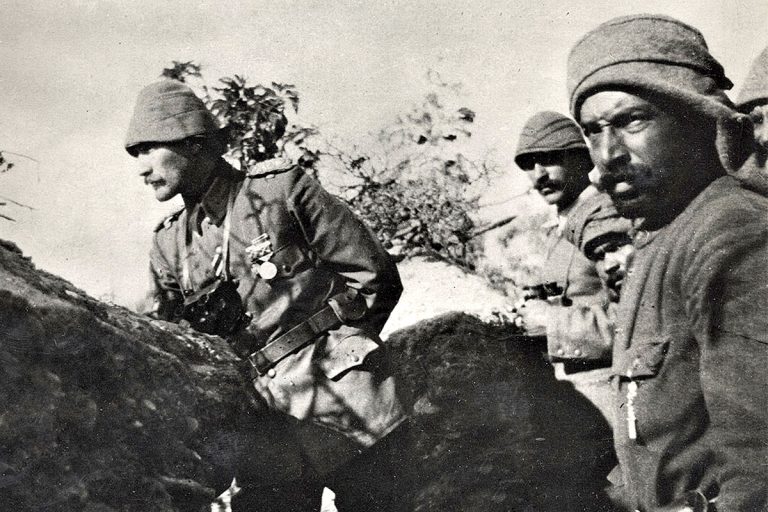
United states flag and soviet union flag painted on the cracked wall , USA and soviet union relations , USA and soviet union conflict
The Beginning
The Cold War period is a historical period that began in 1947 after World War II and continued until the dissolution of the Soviet Union in 1991, and was not directly transformed into a hot war, but was characterized by an ideological, political, economic and military struggle. This process witnessed the efforts of the two superpowers, the USA and the Soviet Union, to establish superiority between the capitalist and communist systems.
The foundations of the Cold War are based on the reconstruction process of war-torn Europe after World War II. While capitalism and liberal democracy were adopted in Western Europe under the leadership of the USA, communism and single-party governments dominated in Eastern Europe under the influence of the Soviet Union. This situation divided the world into two as the “Western Bloc” and the “Eastern Bloc”. While the USA supported Western Europe with initiatives such as NATO and the Marshall Plan, the Soviet Union tried to increase its own influence with structures such as the Warsaw Pact and Comecon.
Development
One of the most distinctive characteristics of the Cold War was that indirect struggles were at the forefront instead of direct conflict. During this period, the parties tried to establish superiority through methods such as propaganda wars, espionage activities, economic embargoes and proxy wars. Conflicts such as the Korean War (1950-1953), the Vietnam War (1955-1975) and the Afghanistan War (1979-1989) are examples of these indirect struggles. In addition, events such as the Cuban Missile Crisis (1962) showed the risk of the Cold War turning into a nuclear war. This crisis was one of the moments when tensions between the US and the Soviet Union peaked.
Another important dimension was the space race. The Soviet Union’s sending the Sputnik satellite into space in 1957 mobilized the US and a scientific and technological competition began between the two sides. The US sending a man to the Moon with the Apollo 11 mission in 1969 symbolized the US’s superiority in this race. At the same time, both sides entered the nuclear arms race and implemented deterrence policies.
The Cold War also brought economic competition. While the US tried to increase the appeal of the capitalist system by supporting European economies through the Marshall Plan, the Soviet Union tried to spread the socialist economic model. However, the Soviet economy faced serious problems, especially in the 1980s. The inefficiency of the central planning system, the low living standards of the people and the increasing military expenditures dragged the Soviet Union into an economic crisis.
Conclusion
In the late 1980s, Soviet leader Mikhail Gorbachev’s reform policies, Glasnost (openness) and Perestroika (restructuring), accelerated the dissolution of the Soviet Union. The communist regimes in Eastern Europe fell one by one, the Berlin Wall fell in 1989, symbolizing the end of the division between East and West. Finally, in 1991, the Soviet Union officially dissolved, and the Cold War period ended.
The Cold War radically shaped world politics and international relations. The military, economic and diplomatic strategies developed during this period provide an important basis for understanding the balance of power in today’s world. At the same time, the Cold War accelerated technological and scientific advances, leaving both positive and negative legacies.

Image link 1: https://www.google.com/url?sa=i&url=https%3A%2F%2Fhistory.howstuffworks.com%2Fhistory-vs-myth%2Fwho-won-cold-war.htm&psig=AOvVaw2lpFwkVmZvZPjyulQxLfJP&ust=1734611418483000&source=images&cd=vfe&opi=89978449&ved=0CBQQjRxqFwoTCLio3Z2psYoDFQAAAAAdAAAAABAE
Image link 2: https://www.google.com/url?sa=i&url=https%3A%2F%2Fwww.imdb.com%2Ftitle%2Ftt0170896%2Freviews%2F&psig=AOvVaw2lpFwkVmZvZPjyulQxLfJP&ust=1734611418483000&source=images&cd=vfe&opi=89978449&ved=0CBQQjRxqFwoTCLio3Z2psYoDFQAAAAAdAAAAABAI
Referances : https://www.history.com/topics/cold-war/cold-war-history
https://www.britannica.com/event/Cold-War
and ChatGPT

